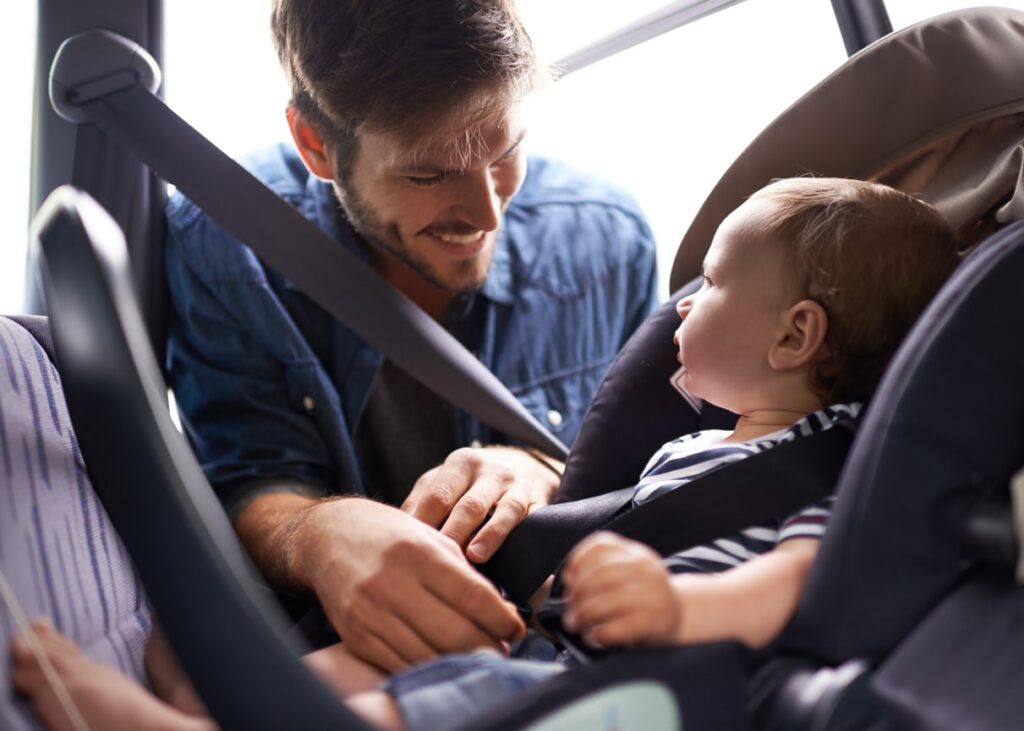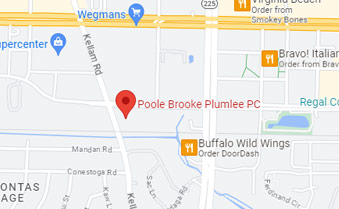
Children of any age are at high risk for injury when a car accident occurs — and the smaller the child, the higher the risk. An important change in the Virginia child car seat law addresses the extremely high risk of injury for very small children and takes effect later this year.
Virginia Child Car Seat Law and Auto Child Safety Requirements
Virginia’s law relating to child safety restraints in automobiles is not new — it’s been in effect for many years. However, the legislature made a significant change in 2018 that goes into effect in July 2019.
Rear-Facing Car Seats Required for Infants and Toddlers
The amended vehicle child restraint law continues the existing requirement that anyone who transports a child under the age of eight years must properly secure the child in a car seat or booster seat. The major change in the law concerns use of rear-facing car seats for younger children.
Starting in July 2019, a child must occupy a rear-facing car seat until at least the age of two years or until the child reaches the seat manufacturer’s minimum weight for facing forward. The new provision complies with an American Academy of Pediatrics recommendation, which is based on the superior support provided by a rear-facing seat for a developing child’s head, neck, and spine.
Provisions of the law already in effect require that child car seats must be in the back seat of the car. If a vehicle does not have a back seat (such as a pick-up truck), the car seat may be in the front passenger side only after deactivating the passenger airbag if the vehicle has one.
Seat Belts Required for Everyone Under Age 18
The law continues to require that an appropriate safety belt must properly secure any person under 18 years of age who is not in a child car seat. In other words, when you carry any passenger under 18, that person must be either in a car seat or be secured by a safety belt.
Exceptions to the Virginia Child Car Seat Law Requirements
The Virginia child car seat and seat belt requirements apply to all motor vehicles manufactured after January 1, 1968. However, they do not apply to taxicabs, school buses, executive sedans, limousines, buses, other public transportation, or certain farm vehicles.
The statute has a provision allowing a special exception if a physician provides a written statement after making the determination that use of a child restraint system by a particular child is impractical because of the child’s weight or height, physical unfitness, or other medical reason. The law requires the person transporting such a child to carry the physician’s written exemption statement in the vehicle or on his or her person.
Keeping Your Child Safe in Your Vehicle
If you put your child in the right device, and position the child and restraint correctly, you significantly decrease the risk of injury to your child in the event of an accident. The goal of Virginia’s child restraint law is to keep your children safe when they travel in your vehicle. While the rear-facing seat requirement doesn’t go into effect until July of 2019, you should implement it as soon as possible to provide better protection for your little one.
For some children (like infants), determining the right car safety protection is straightforward. As children get older and their little bodies develop, it sometimes is difficult to know what type of device or restraint is best.
When small children outgrow a rear-facing seat, they should ride in a forward-facing seat until they reach the height or weight limit for the specific seat. Then, when the child outgrows the forward-facing seat limits, the child should ride in a booster seat in the back seat of the vehicle until they are at least eight years old (as required by the law).
Even a child over the age of eight should ride in a booster seat until a seat belt fits property, which usually is when the child is about 4’9” tall. Before allowing your child to use a seat belt, be certain the fit of the seat belt meets all these requirements:
- The shoulder belt rests against the child’s shoulder, not against his or her neck.
- The lap belt goes across the child’s thighs, not across his or her stomach.
- The child can sit all the way back in the seat, with knees bending beyond the edge of the seat, and feet on the floor.
- The child is comfortable staying in that position for the entire travel time.
Smaller bodies that are still developing have greater risk of injury in a crash. The guidelines and legal requirements protect developing bones and tissues in children. Full development of those bones and tissues generally occurs after the age of 17, so the requirements apply to children until they are 18 years of age.
Additional helpful information about child car seats and booster seats is available from the National Highway Transportation Safety Administration. The Child Passenger Safety Program of the Virginia Department of Health also provides guidance for those transporting young children in vehicles.
Virginia Beach Personal Injury Lawyer Dedicated to Helping Injured Accident Victims and Their Families
If you suffer serious injuries in an accident that was another person’s fault, respected Virginia Beach auto accident attorney Jeff Brooke has the experience and skill to help. At The Jeff Brooke Team, we are fully committed to helping clients and their families recover the compensation they deserve. Contact us by phone at (757) 785-0837 or by using our online contact form.
Jeff Brooke is a personal injury attorney devoted to helping individuals who have suffered serious and catastrophic injuries or lost a loved one because of someone else’s negligent and careless actions. The Jeff Brooke Team serves all of southeastern Virginia. The firm helps clients in the Greater Tidewater and Greater Hampton Roads areas, including in Virginia Beach, Norfolk, Portsmouth, Chesapeake, and Chesterfield. The Jeff Brooke Team also handles cases in northeastern North Carolina, including the Outer Banks.



Leave a Reply